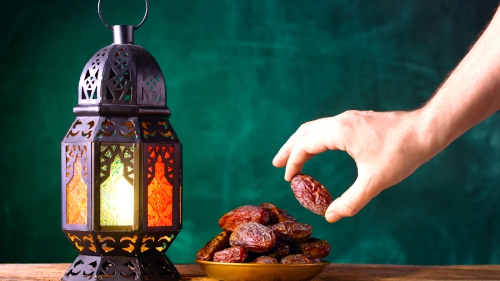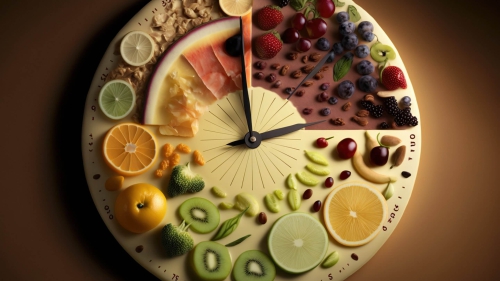Alternate Flours

As of a year ago, Aliya Durrani* could barely get herself out of bed. She had to force herself every morning and drag through her day in a foggy state. The mother of four from Glen Ellyn, Illinois, attributed her declining energy to missing her daughter, who had recently gotten married.
“I assumed I was suffering from the blues of separating from my daughter,” recalls Durrani. “However, when running simple errands down the street or just getting through the day became extremely cumbersome, I knew it must be something more and had to do something about it.”
Durrani consulted a friend who is a physician and was advised to try removing gluten from her diet—a substance that is a mixture of two proteins present in grains, especially wheat, and is responsible for the elastic texture of the dough. For someone who grew up in Pakistan with a deep love for wheat-based roti’s (thin and round flatbreads), Durrani found this advice to be very challenging. She was accustomed to eating foods derived from wheat flour multiple times a day. As her symptoms persisted, Durrani was then told to get a test done for Celiac disease, which turned out to be positive.
Celiac disease is a serious autoimmune disorder, where the ingestion of gluten leads to damage of the small intestine. It is estimated to affect 1 in 100 people worldwide.
“Once I was diagnosed, I had to stop consuming wheat immediately,” shares Durrani. “The first month was quite painful without wheat foods. It’s amazing how many things contain gluten in them, even medications; but if you don’t take precautions, worse health problems can arise like colon cancer.”
The first thing Durrani had to do was change her mindset and realize she was not depriving herself but working to heal herself instead. She quickly found alternatives to wheat flour by using almond flour and making her own chickpea flour as replacements.
Within weeks, Durrani felt a change. She was able to be more active and full of energy again. According to Durrani, she could not have done it without the support of her family as this became a lifestyle change for all of them.
“My youngest is 8 years old and won’t even let me drink from her glass if she has eaten something with gluten,” Durrani says. “I have had to alter our family meals to accommodate my dietary needs, but it is not difficult when everyone is on board. As a family, we also tend to eat out less now to avoid the risk of cross-contamination.”
Sandra Zamat of Villa Park, Illinois, is a mother of 3 and also makes it a point to prevent the same risk of cross-contamination for her eldest son by almost entirely making foods at home. Her 7-year-old son was having a hard time falling asleep as well as focusing in school, so Zamat tried putting him on a gluten and dairy free diet after doing some research online.
“We saw a change in him within the first week,” says Zamat. “He himself noticed the difference right away. Of course he misses his favorite foods like pizza and mac and cheese, but it’s worth the sacrifice since his sleep and digestion have regulated.”
Zamat uses coconut flour for baking sweets and stirring up batter for breakfast foods like pancake and waffles. For pizza crusts, she uses cauliflower and makes bread out of zucchini.
“If we go to someone’s house, we take food with us,” notes Zamat. “It was challenging at first as we felt excluded from a lot of foods. However, once we came to terms with it, we learned to accommodate our lifestyle accordingly. There are a lot of flours out there, even restaurants offer more options now.”
According to fitness trainer and nutrition specialist Abby Mohammed of Addison, Illinois, there is no nutritional value to processed white (wheat-based) flour. For health purposes, the mom of two makes a conscious effort to avoid processed white flour as it is high in refined carbohydrates, spikes up blood sugar levels, and sparks hunger quickly.
“We end up craving these refined carbohydrates more, since they are not slow-digesting,” informs Mohammad, a National Academy of Sports Medicine-certified personal trainer and founder of Veiled Fitness training for women. “Who doesn’t love bread, but it is not part of my regular diet. I recommend more wholesome grains instead.”
Some alternatives to white flour that Mohammed suggests include almond or coconut flour, but she warns of their high-fat content, which can be hard on the digestive system. Mohammad notes that there is also the option of using ground flax seed or oats, eggs, or bananas to sustain the fluffiness quality to baked goods like cakes and cookies. Some trial and error (and a certain finesse) may be required to get the right texture and flavor to most common foods.
That is what educator and mother of two Amira Elamri discovered after she decided to develop a gluten-free diet for her 12-year-old son, who was suffering from recent health issues.
“My son’s health began to decline unexplainably over the last year,” tells Elamri of Newton, Massachusetts. “We started logging what he eats and noticed every time he consumed foods derived from white or wheat flour, he would get sick.”
So, Elamri got creative. “I didn’t want the change to be too drastic for him, so I learned to make his favorite foods with different types of flours like almond or rice flour,” Elamri says. “It’s amazing how much variety is available out there. I’ve even used cornmeal to coat chicken and figured out how to make pizza dough with other flours.”
Whether it is for health reasons or improving one’s nutrition, weaning oneself from the usual white or wheat flour is certainly doable. It is important to do one’s own research, read labels, and build awareness of the effects of certain types of flours. Hopefully, with the right flour power, we can fine-tune the foods we are accustomed to eating without having to really sacrifice taste or quality. In turn, it can make us more healthy, energetic, and productive individuals.
*Name has been changed for the privacy of the interviewee.
TYPES OF FLOURS:
- Buckwheat flour is derived from a seed that is high in protein, B vitamins, and minerals like manganese, magnesium, zinc, and iron. It is not a grain and does not contain wheat. It has a bold, nutty flavor and is often used in pancake and waffle mixes.
- Coconut flour has a low glycemic index and can keep blood sugar levels down. It is gluten-free and has more fiber than any other alternative flour. It has a light, nutty flavor, is great for coating, and can be used in recipes that require high-heat cooking or baking.
- Chickpea flour is made from ground chickpeas or garbanzo beans. It provides an ideal ratio of nutrients such as magnesium, calcium, and B vitamins. However, it can also cause excessive gas or bloating. It can be used for sweet or savory dishes like pancakes, breads, and soups
- Almond flour is a nutty, grain-free alternative. It is packed with important nutrients like L-arginine and magnesium and has been found to lower LDL cholesterol. It is good for making cookies and cakes, veggie burgers, or coating foods.
- Tapioca flour is made from the crushed pulp of the South American and Caribbean cassava root. It is not the most nutritious substitute but is free of gluten and sugar and is low-calorie. It works as a thickening agent in batters, soups, and stews. It can also be used for piecrusts and brings a chewy texture to cookies and brownies.
- Rice flour digests easily and is non-allergenic. Brown rice flour is higher in B vitamins than white rice flour. It can be turned into pasta and is great for baked goods like cookies and cakes.
- Spelt flour comes from an ancient grain and has a slightly sweet and nutty flavor to it, creating light and soft baked goods. It still contains gluten but is rich in fiber and digests easier than whole wheat. It works for pizza crusts, breads, and other recipes as a one-to-one replacement for white flour.
- Amaranth flour is an ancient flour originating in Peru and is naturally gluten-free. It has an earthy, nutty taste, is very versatile, and great for baking. It is known to help fight diabetes and support bone health with a high amount of protein.
- Sprouted flour can be made from wheat, spelt, corn, rye, or amaranth. It comes from grains that have begun to sprout or germinate, allowing a potential increase in vitamins and minerals as well as adding more flavor into food from its starch content that breaks down into a simple sugar. It is great for cornbread muffins and other sweet or savory treats like bread, cookies, or crackers.
About the Author: Tayyaba Syed is a dual award-winning children’s author and freelance journalist. She travels extensively to share her love for reading and writing as a writing coach and Muslim storyteller. Her work has been featured in NPR, and she has written for more than 20 book titles including Encyclopedia Britannica. She lives with her husband and three children in Illinois.
Reprinted from the Fall 2018 issue of Halal Consumer© magazine with permission from the Islamic Food and Nutrition Council of America (IFANCA®) and Halal Consumer© magazine.

















